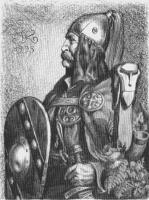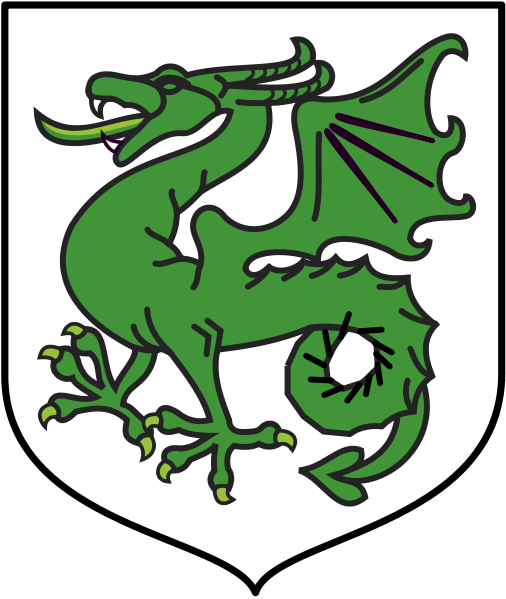0
















| Thumbs Up |
| Received: 9 Given: 1 |

Sorry I can't found nothing in English, it's in Polish:
Jaka jest genealogia słów święto, świętować?
Z przyjemnością przedstawię pochodzenie wymienionych w pytaniu wyrazów. Rzeczownik święto pochodzi od dawnej, tzw. krótkiej, formy przymiotnika święty w rodzaju nijakim. Natomiast sam przymiotnik zarówno w odmianie krótkiej, prostej: świąt, święta, święto, jak i długiej, złożonej: święty, święta, święte jest dziedzictwem prasłowiańskim i występuje we wszystkich językach słowiańskich. Pierwotne, prasłowiańskie znaczenie tego przymiotnika to 'mocny, silny'; zachowało się w przedchrześcijańskich imionach Świętopełk to znaczy 'mający mocne, silne pułki', Świętosław, czyli 'cieszący się dużą sławą'. Znaczenie wtórne ukształtowało się w czasach przyjmowania chrześcijaństwa pod wpływem łac. sanctus, stąd święty to 'mocny duchem, mający moc nadprzyrodzoną'. Ta zmiana znaczeniowa polegała na przejściu od konkretu (tężyzna fizyczna) do abstraktu (siła ducha, charakteru). Później święty oznaczał również 'błogosławiony, pobożny' oraz 'świąteczny, uroczysty', a w użyciu rzeczownikowym 'osoba czczona publicznie i powszechnie, kanonizowana po śmierci'.
Święto to właśnie święty dzień, czyli 'dzień obchodzony uroczyście ze względów kulturowych', a później także innych, np. narodowych, państwowych.
Od rzeczownika święto pochodzi czasownik świętować 'obchodzić święto; spędzać jakiś dzień uroczyście'.
Wyrazów pochodzących od święty, święto jest bardzo dużo, m.in.: przysłówek święcie oraz świętoszek, świętokradca, świątynia, odświętny, świątobliwy, święcić, święcone.
Pozdrawiam świątecznie
— Krystyna Długosz-Kurczabowa, Uniwersytet Warszawski















| Thumbs Up |
| Received: 1,268 Given: 92 |

I disagree with this. Esp. the idea that the meaning was derived from Christian influence, because this word has the same meaning in ALL Slavic languages, and Slavs were christianized after they've already split to dialects, and such an evolution absolutely could not possibly involve the whole Slavic area from Novgorod to Thessalonica. Also, check, for example, Baltic languages. Lithuanians and Prussians were the last to be christianized in Europe, as late as XIV century - and still have the same meaning of the same Balto-Slavic root - "švent̃as", Old Prussian "swentas". The etymology of Slavic "*swęntŭs" is exactly same as of Latin "sanctus". It might have for some period had that meaning as in the article (mocny, silny), but it was secondary. The primary meaning of this root has not changed since P.Indo-European times. Compare Vedic Sanskrit "cvāntás", Avestan "spǝnta-" et cetera, same.Pierwotne, prasłowiańskie znaczenie tego przymiotnika to 'mocny, silny'; zachowało się w przedchrześcijańskich imionach Świętopełk to znaczy 'mający mocne, silne pułki', Świętosław, czyli 'cieszący się dużą sławą'. Znaczenie wtórne ukształtowało się w czasach przyjmowania chrześcijaństwa pod wpływem łac. sanctus, stąd święty to 'mocny duchem, mający moc nadprzyrodzoną'. Ta zmiana znaczeniowa polegała na przejściu od konkretu (tężyzna fizyczna) do abstraktu (siła ducha, charakteru).
Yes, this meaning is obviously from Christianity (since such a thing hadn't existed prior to it) - "holy" in Christian sense as opposed to "divine"/"miraculous" in Pagan sense.a w użyciu rzeczownikowym 'osoba czczona publicznie i powszechnie, kanonizowana po śmierci'.













| Thumbs Up |
| Received: 10 Given: 0 |

One of the most beautiful mitologic creatures in Slavic paganism, which was presented in all Slavics.
Žar ptica

veni, vidi, dormivi













| Thumbs Up |
| Received: 10 Given: 0 |

Vile (in english fairies), we had a lot of themespecially Montenegrins and Serbs like vile...
http://en.wikipedia.org/wiki/Slavic_fairies
I couldn't find something more representative about Baš Čelik, but we couldn't forget him as a part of our mytology.
veni, vidi, dormivi















| Thumbs Up |
| Received: 1,268 Given: 92 |

Actually "Žar Ptica" ("Fire bird") is a fairy-tale derivative of a far darker Slavic mythological creature - the Rarog. It is the fire hawk-demon, associated with hurricanes, dragons, and firestorms. On the other hand, it could bring fortune (hence the fairy tales about fire bird's feather bringing luck et cetera).













| Thumbs Up |
| Received: 10 Given: 0 |

Isn't so beautiful that we share so common things...thnks to this thread I am in "so Slavic mood"
veni, vidi, dormivi












| Thumbs Up |
| Received: 32 Given: 0 |

Żar ptaki were apparently living in the crown of the tree that symbolised universe, while its roots was guarded by żmije. These were another sort of demons, and belief in żmije was common to all Slavs. Żmij personified some "heavenly" phenomenons like comets. It was apparently believed to be a guardian and protector of people.
Long earthwork fortifications built by Kievan dukes against steppe nomads were called "wały żmijowe". I wonder if its because of some connection to the demon, or just simply because they were long and "snaking around" the countryside
Żmij or a dragon featured in the coat of arms of one Masovian ducal family from the Piast dynasty (dukes of Czersk):














| Thumbs Up |
| Received: 3 Given: 0 |

Some of my favourite mythical creatures are берегині/русалки..although I like many mythological creatures (I don't like the scary ones...although there are any of those).
Most of my knowledge about Slavic mythology is from ethnographic studies that I've looked at over the years, and some is from books such as "Вечера на хуторе близ Диканики", which I enjoyed immensely both because it's about the area I'm from and because of the folkloric element...I have to say, I much preferred reading it to reading ethnography textbooks...just wish there'd be more books like that.















| Thumbs Up |
| Received: 1,268 Given: 92 |

There are currently 1 users browsing this thread. (0 members and 1 guests)
Bookmarks